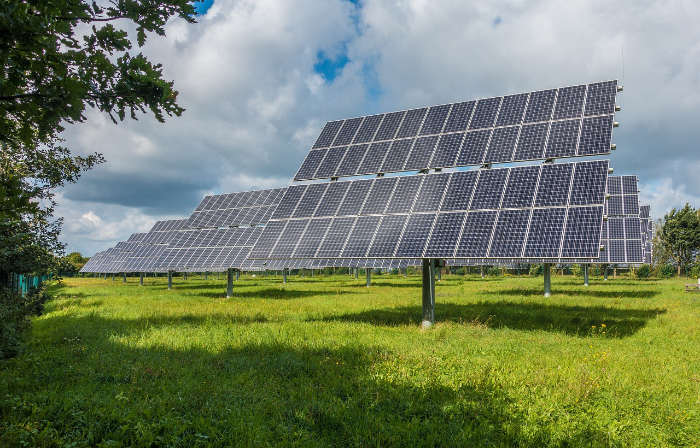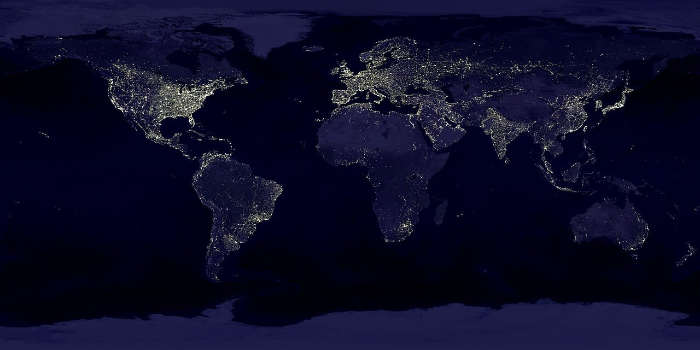Energy Consumption by Country 2025

0
100
200
300
400
500
600
700
800
5 Countries that Consume the Most Energy Per Capita
769 GJ/cap
649 GJ/cap
497 GJ/cap
383 GJ/cap
382 GJ/cap
Country | Per Capita Energy Consumption 2024 (GJ/cap)↓ | Energy Consumption 2024 (EJ) | |
|---|---|---|---|
| Qatar | 769 | 2.34 | |
| Singapore | 649 | 3.79 | |
| United Arab Emirates | 497 | 5.48 | |
| Kuwait | 383 | 1.89 | |
| Trinidad and Tobago | 382 | 0.58 | |
| Saudi Arabia | 347 | 11.8 | |
| Oman | 302 | 1.6 | |
| Canada | 299 | 11.9 | |
| United States | 266 | 91.8 | |
| South Korea | 254 | 13.2 | |
| Russia | 219 | 31.8 | |
| Australia | 205 | 5.47 | |
| Norway | 200 | 1.12 | |
| Belgium | 192 | 2.25 | |
| Taiwan | 188 | 4.37 | |
| Finland | 188 | 1.06 | |
| Turkmenistan | 178 | 1.34 | |
| New Zealand | 177 | 0.92 | |
| Netherlands | 166 | 3.02 | |
| Sweden | 157 | 1.66 | |
| Kazakhstan | 146 | 3 | |
| Iran | 140 | 12.8 | |
| France | 135 | 9.01 | |
| Malaysia | 134 | 4.76 | |
| Czechia | 133 | 1.43 | |
| Japan | 133 | 16.4 | |
| Hong Kong | 132 | 0.98 | |
| Belarus | 128 | 1.16 | |
| Austria | 123 | 1.12 | |
| Germany | 120 | 10.1 | |
| China | 112 | 159 | |
| Switzerland | 109 | 0.97 | |
| Spain | 107 | 5.13 | |
| Israel | 101 | 0.94 | |
| Greece | 101 | 1.01 | |
| Poland | 98.7 | 3.8 | |
| Hungary | 94.4 | 0.91 | |
| Italy | 94.4 | 5.6 | |
| United Kingdom | 93 | 6.43 | |
| Turkey | 80.3 | 7.02 | |
| Chile | 78.2 | 1.54 | |
| South Africa | 75.3 | 4.82 | |
| Venezuela | 73.9 | 2.1 | |
| Portugal | 73.7 | 0.77 | |
| Argentina | 71.6 | 3.27 | |
| Azerbaijan | 70.5 | 0.73 | |
| Thailand | 70 | 5.02 | |
| Uzbekistan | 66.8 | 2.43 | |
| Mexico | 61.5 | 8.04 | |
| Romania | 61 | 1.16 | |
| Algeria | 58.4 | 2.73 | |
| Iraq | 57.4 | 2.64 | |
| Ukraine | 57 | 2.16 | |
| Brazil | 50.5 | 10.7 | |
| Vietnam | 45.4 | 4.59 | |
| Indonesia | 39 | 11.1 | |
| Ecuador | 38.6 | 0.7 | |
| Colombia | 35.6 | 1.88 | |
| Egypt | 33.5 | 3.9 | |
| Peru | 33.1 | 1.13 | |
| India | 26.7 | 38.8 | |
| Morocco | 24.8 | 0.95 | |
| Philippines | 21.9 | 2.54 | |
| Sri Lanka | 14.8 | 0.34 | |
| Pakistan | 11.9 | 2.99 | |
| Bangladesh | 10.9 | 1.89 |
- GJ/cap = Gigajoules per capita per year
- TB/D = Thousands of barrels per day
- BKWh = Billion kilowatt hours. A kilowatt hour is equivalent to 3.6 megajoules (MJ, a million joules) and is the energy delivered by one kilowatt of power for one hour
- EJ = Exajoules, which is equivalent to one quintillion (a million trillion, or a one followed by 18 zeroes) joules. A joule is a measure of energy equivalent to the amount of electricity required to power a one-watt device for one second of time.
- Renewables is a combined metric that includes solar, wind, and biofuel power.
Humankind consumes vast amounts of energy each year. Some energy sources can be used directly—for instance, coal and natural gas can be burned to heat homes. But more often, energy sources are used to produce electricity, which has an almost boundless range of uses. These include heating and cooling homes; preparing food; and powering a vast array of modern devices, from cell phones and computers to satellites and medical equipment.
In order to determine overall energy consumption, it is necessary to combine consumption data for many energy sources, including (but not limited to): electricity consumption by country, oil consumption by country, natural gas consumption by country, and coal consumption by country.
Top Biggest Energy-Consuming Countries - Total (2023)
In terms of overall energy consumption, China and the United States dwarf all other countries, with China using the most electricity and the U.S. consuming the most oil. Although many factors contribute to a given country’s energy consumption—its level of industrial development, geographical size, standard of living—the single most influential factor is population size. This point is supported by the fact that China, the U.S., and the third-place overall energy consumer India are the world’s three most populous countries and also rank high in meat consumption per country (but not, perhaps surprisingly, in milk consumption).
Top Energy-Consuming Countries - Oil (1K barrels per day 2023)
As shown in the tables above, when broken down by energy category, the order changes, but the countries included stay largely the same. However, when consumption totals are divided by the population to determine the per capita use of energy, the highest consumer is neither the United States, China, nor any other country in the top 10. Instead, that honor goes to Qatar.
In 2022, Qatar ranked 53rd globally in total electricity consumption, and in 2023 it ranked 39th in oil consumption. But despite its relatively small population, in 2023, Qatar had the highest per capita energy consumption rate in the world—averaging an estimated 745 gigajoules per person per year. That’s equivalent to nearly 207,000 kilowatt hours per person annually. For comparison, China led the world in total energy consumption, but its per capita usage was only about 109 gigajoules, or roughly 30,300 kilowatt hours per person.
Some nations consume very little energy. This is typically due to the countries having a small overall population, but factors like the level of development (particularly infrastructure such as roads and electrical grids) also play a role. Whatever the reason, more than two dozen countries and territories consume fewer than a billion kilowatt hours of electricity per year, and eleven are known to consume very little oil as well.
Countries that consume less than 50,000 barrels of oil per day:
The disadvantages of energy usage
While mankind’s ability to convert Earth’s natural resources into energy has improved nearly every aspect of modern life, energy use has its detriments. For example, the generation and delivery of electricity requires the construction of large and expensive infrastructure, including millions of miles of wires and cables. Electricity increases the risk of fire in the home, particularly is installed unprofessionally or used to power aging or worn-out appliances. Furthermore, electrical power plants (particularly coal-fired plants) generate significant pollution, which degrades air quality and contributes to global warming.
Oil presents a similar trade-off. Even before the invention of the internal combustion engine revolutionized transportation of both humans and product, oil was used to provide light and heat to homes and businesses—but it must be burned in order to unleash its energy, releasing significant greenhouse gases and contributing heavily to both the carbon footprint per country and global warming.
These concerns have led to rising interest in green and renewable energy sources, with many countries increasing their investment in wind power, solar power, and other forms of renewable energy, with the goal of ultimately becoming carbon negative countries.
Sources
- Statistical Review of World Energy - Energy Institute
- Electricity net consumption - U.S. Energy Information Administration
- Statistical Review of World Energy 2021 - British Petroleum
- Per Capita Energy Consumption - Our World in Data
- Electric power consumption (kWh per capita) - World Bank
- Petroleum and other liquids consumption - U.S. Energy Information Administration
























